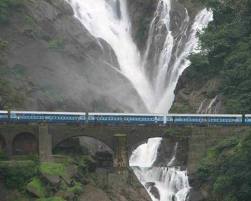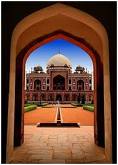Hanumakonda in Warangal is a home to one of the very old temples of Andhra Pradesh, viz., the Thousand Pillar Temple.
The Thousand Pillar Temple is one of the very old temples of south India built by the Kakatiyas of Chalukya dynasty and this stands out to be a master piece and achevied major hieights in terms of architectural skills by the ancient kakathiya vishwakarma sthapathis. It is believed that the marvelous thousand pillared temple was built by King Rudra Deva in 1163 AD.
The Thousand Pillar Temple is a specimen of the Kakatiyan style of architecture of the 12th century.
It was destroyed by the Mughal Empires during their invasion of South India. It comprises one temple and other building. There are one thousand pillars in the building and the temple, but one pillar will not obstruct another from any point of the temple to see the god in the other temple.
The present day engineers have taken out all the pillars from the building to make it in to a perfect shape. After they lifted all the pillars they encountered a huge mass of sand. It took nearly two weeks for them to take away all the sand. It was wet sand, it is always wet because there is pipe connection directly from the nearby water body named Bhadrakali Cheruvu. It was one of the master piece in Civil Engineering. The Kakatiyans have used the well foundations 900 years ago.
The Thousand Pillar Temple with its ruins lies in the near the Hanamkonda-Warangal highway, about 150 kilometers from Hyderabad city. This temple is a beautiful star shaped with several shrines and lingams. There are three shrines inside the temple called the Trikutalayam. The three shrines of the Thousand Pillar Temple are dedicated to Lord Shiva, Lord Vishnu and Lord Surya. The Thousand Pillar Temple is surrounded by a big garden in which many small lingam shrines can be seen. Further there are 1000 richly carved pillars with an impressive Nandi bull in the temple. Nandi bull was carved out of a black basalt monolith polished carefully to give it a brilliant look. The Thousand Pillar Temple is constructed on a platform that is raised to 1 meter height from the ground level. The temple is provided with a number of pillars which are beautifully carved and adorned. Delicate stone work which definitely adds charm and beauty to this Thousand Pillar Temple. Rock cut elephants and perforated screens in the temple which are the characteristic of the then prevailing dynasty. The Thousand Pillar Temple is famous for its beautifully carved pillars, screens and detailed sculpture.
NEARBY ATTRACTIONS :
Bhadra Kali Temple
Bhadra Kali Temple is situated on a hilltop between Hanamkonda and Warangal, it is noted for its stone image of the Goddess Kali.
Jain Temple
Jain Temple which is 2,000-year-old Jain temple of Mahaveer is a famous place of worship for Jains in the country. The temple is embellished with beautiful images of Thirthankaras. The 5ft high image of Mahavira is entirely carved of Jade
Kolanupaka
Kolanupaka is 80-km from Hyderabad, and is situated between Hyderabad and Warangal. This was the second capital town of Kalyani Chalukyas during the 11th century AD. During this period the village was a religious centre of Jains, and ranks among other great Jain centers in the south.
Sri Veeranarayana Temple
Sri Veeranarayana Temple is raised in the Chalukyan style around 1104 AD.
Pakhal Lake
Pakhal Lake is a man-made lake built in 1213 AD by the Kakatiya king, Ganapathidev, by harnessing a small tributary of the Krishna River. It is located 50-km from Warangal and spreads over an area of 30-sq-km.
Ramappa Temple
Ramappa Temple or Ramalingeswara is the temple situated in Palampet village, which is 70-km form Warangal. This is a beautiful monument dating back to 1213 AD. It displays the glory and richness of the Kakatiya kingdom.
BEST TIME TO VISIT :
The Best time to visit the temple is from the month of October to March.
Accomodation :
The lodges and hotels in all three townships are primarily functional. It is best to stay at the Andhra Pradesh Tourism Development Corporation's Punnami Hotel at Kazipeth, opposite the REC and near the rail station. This is close to Hanamkonda and Warangal and is the most practical option to explore the area. The tourist season is winter; at other times there should be no problem with accommodation
HOW TO REACH THOUSAND PILLAR TEMPLE :
By Air :
The closest airport to this place is in Hyderabad.
By Rail :
The nearest railway station is in Warangal which is connected well with the other important cities and states of India.
By Road :
There is service of Private and APSTRC buses that connect well to Hyderabad, Karimnagar, Vijayawada, Khammam and some of the other districts.
GET DIRECTIONS
View Larger Map


















































